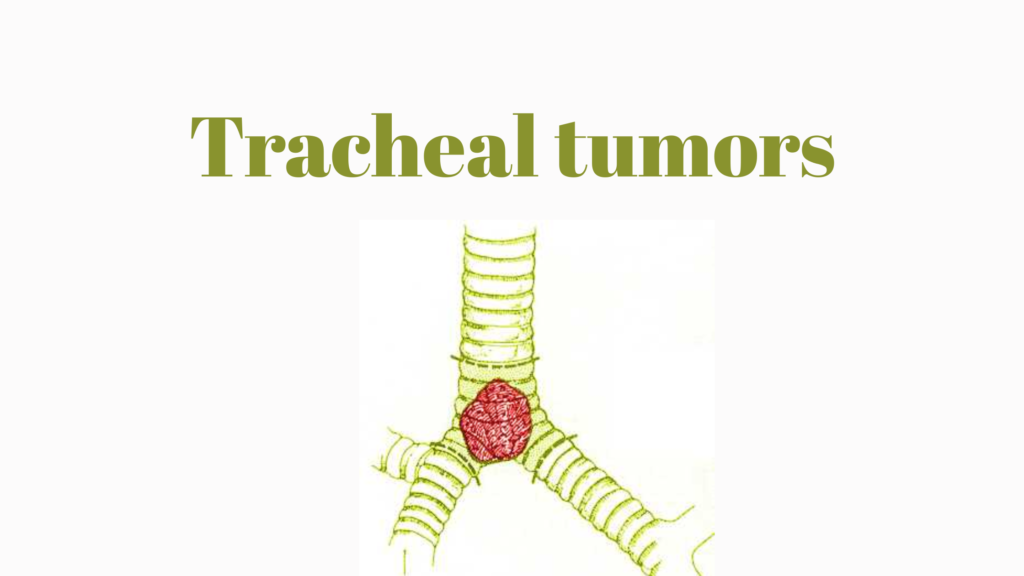Tracheal tumors are abnormal growths that develop within the trachea (windpipe). They are rare but can cause significant airway obstruction and respiratory symptoms.
🔍 Types of Tracheal Tumors
1. Benign Tumors
- Papillomas (caused by HPV)
- Hemangiomas (vascular tumors)
- Chondromas (cartilage tumors)
- Fibromas
Benign tumors grow slowly and rarely spread but can still block the airway.
2. Malignant Tumors
- Squamous Cell Carcinoma – most common malignant tracheal tumor; strongly linked to smoking
- Adenoid Cystic Carcinoma – slower growing, but tends to invade surrounding tissues
- Mucoepidermoid Carcinoma
- Small Cell Carcinoma (rare)
⚠️ Symptoms
- Persistent cough
- Hemoptysis (coughing up blood)
- Progressive shortness of breath
- Stridor or wheezing not responding to asthma treatment
- Voice changes or hoarseness
- Recurrent respiratory infections
🧪 Diagnosis
- Chest and neck CT scan – identifies location and extent of tumor
- Bronchoscopy – direct visualization and biopsy
- MRI – useful for assessing soft tissue invasion
- PET scan – to evaluate metastasis in malignant cases
💊 Treatment
Benign Tumors:
- Surgical removal
- Endoscopic resection (using bronchoscopy)
- Laser ablation or cryotherapy
Malignant Tumors:
- Surgery (if possible) – segmental resection of affected trachea
- Radiation therapy
- Chemotherapy (depending on tumor type and spread)
- Palliative care for advanced disease
🛡️ Prognosis
- Depends on tumor type, size, and stage at diagnosis
- Benign tumors generally have excellent prognosis after removal
- Malignant tumors carry a poorer prognosis, often due to late diagnosis and airway involvement
